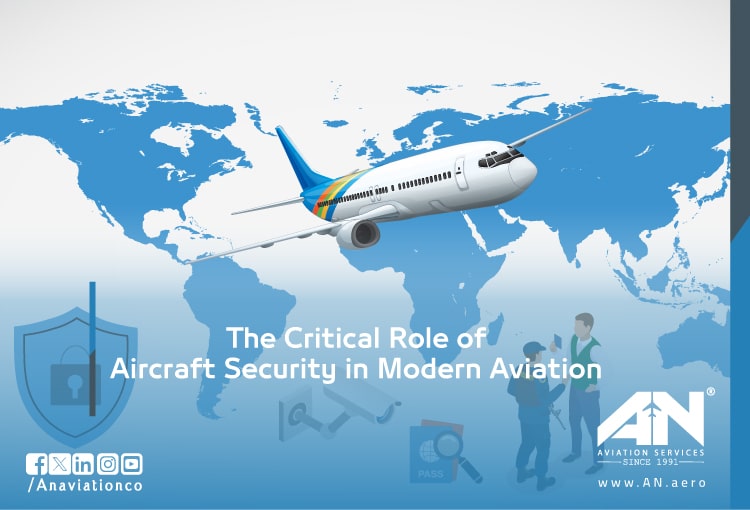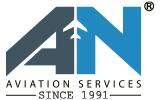
Aircraft security has become one of the most important pillars of modern aviation. With thousands of flights operating daily and millions of passengers traveling across countries, maintaining the highest security standards is crucial.
Airlines and airports have developed comprehensive aircraft security protocols to protect passengers, crew members, cargo, and the aircraft itself. These protocols are carefully designed to prevent any security threat from disrupting flight safety or endangering lives.
This article explains the key security protocols used in aviation, highlighting how each step contributes to a secure and smooth flying experience.
Why Are Security Protocols Non-Negotiable?
The aviation industry cannot afford security failures. The consequences of security breaches are often severe, putting lives at risk, causing operational delays, and damaging the reputation of airlines and airports.
This is why aviation authorities and operators enforce strict security measures before, during, and after every flight. Comprehensive protocols are not just a legal requirement; they are a fundamental part of ensuring public safety and trust in air travel.
By following these protocols, aviation professionals reduce the risk of terrorism, sabotage, smuggling, and other unlawful activities, creating a safer environment for passengers and cargo.
Pre-Flight Security Protocols
Passenger & Crew Screening:
Every individual boarding an aircraft, including passengers and crew members, must go through security screening before the flight. This step ensures that no prohibited or dangerous items are brought onboard.
Security personnel screen passengers using metal detectors, X-ray machines, and manual inspections when necessary. Crew members also follow similar procedures, reinforcing the idea that security applies to everyone equally.
Advanced Screening Technologies (CT Scanners, Biometrics):
Airports have adopted advanced screening technologies to strengthen pre-flight security. Modern CT scanners offer three-dimensional images of baggage, enabling security officers to identify concealed threats more accurately.
Additionally, biometric systems, such as facial recognition and fingerprint verification, have improved identity confirmation processes. These technologies help ensure that only authorized individuals board the aircraft, reducing the chances of identity fraud and illegal access.
Behavioral Detection Techniques:
Besides physical screenings, airports have introduced behavioral detection techniques to identify potential threats based on human behavior. Trained officers observe passengers for unusual signs, such as excessive nervousness or evasive actions.
These techniques are useful in detecting individuals who may be attempting to smuggle prohibited items or have malicious intentions, even if their luggage appears clean during the initial screening.
How Aircraft Are Inspected and Secured Before Takeoff?
Before an aircraft is cleared for departure, it undergoes a thorough security sweep. Security officers and K-9 units inspect the cabin, seating areas, lavatories, and storage compartments to ensure that no harmful items have been left behind during cleaning or maintenance.
Manual checks complement the work of detection dogs by focusing on hidden compartments and other sensitive areas of the aircraft.
Security teams also conduct vulnerability assessments of both the cabin and the cargo hold. These assessments involve checking for weak points in the aircraft’s physical structure, access points, and security features.
By regularly evaluating the aircraft’s defenses, operators can address any security gaps before departure, ensuring that the entire aircraft is protected.
Ground Handling Security Measures
1- Ramp Access Control
The aircraft ramp area is highly sensitive, as it provides direct access to the aircraft. Strict ramp access controls ensure that only authorized personnel can enter this zone.
Employees must present valid identification and pass through access gates that are continuously monitored, thereby reducing the risk of unauthorized individuals reaching the aircraft.
- RFID Badge Systems for Personnel: To enhance personnel tracking, airports use RFID badge systems. These badges register every movement of ground staff, providing real-time information about who is near the aircraft and at what time. Any unauthorized movement triggers alarms and prompts security intervention, making it difficult for intruders to go unnoticed.
- Surveillance & Patrol Protocols: Surveillance cameras and routine security patrols further strengthen ground security. Continuous video monitoring captures every activity on the tarmac, while patrol teams respond quickly to any suspicious behavior. These combined efforts ensure that ground handling processes remain secure from beginning to end.
2- Fuel & Catering Security
Airlines place tamper-proof seals on catering carts and fuel supply tanks to detect any unauthorized access. These seals are checked before loading and again before serving, ensuring that no harmful substances are introduced to the aircraft.
Vendors supplying fuel, meals, and other in-flight items must pass rigorous background checks. Airlines only work with verified and trusted vendors, reducing the risks associated with outsourcing services.
In-Flight Security Procedures
In-flight security procedures focus on protecting the aircraft while it is airborne. These measures include securing the cockpit, monitoring passenger behavior, and ensuring quick responses to any threats. Trained crew members, reinforced security systems, and strict protocols work together to maintain safety throughout the entire flight.
- Cockpit Protection: The cockpit remains the most critical section of an aircraft, and it is protected with multiple security layers to prevent unauthorized access during flights. Like reinforced doors & access restrictions as modern cockpits feature reinforced doors that can withstand forceful attempts to break in. Access is strictly controlled, and special entry codes are required to unlock the doors from the cabin. These measures protect pilots and prevent any disturbances from affecting the flight’s operation.
- Crew Communication Codes for Threats: Airlines train their crew members to use discreet communication codes in case of a threat. This enables the crew to coordinate actions and inform the cockpit without alarming passengers. Such protocols improve response times and ensure that the flight remains secure even during unexpected situations.
- Passenger Cabin Security: Certain flights, especially those considered high-risk, may include air marshals onboard. These trained law enforcement officers blend in with passengers but are ready to intervene immediately during any onboard incident. Cabin crew follow clear guidelines when dealing with unruly passengers. They are trained to de-escalate situations, use restraint devices if necessary, and notify ground authorities for assistance upon landing.
Cargo & Luggage Security
High-Risk Cargo Screening
Cargo, particularly that classified as high-risk, undergoes extensive screening. This includes checking documentation, using advanced scanners, and conducting manual inspections where necessary.
1. X-Ray & Explosive Trace Detection:
X-ray machines and explosive trace detectors examine all baggage and cargo for signs of explosives, weapons, or contraband before it is loaded onto the aircraft.
2. Known Shipper Programs:
Airlines participate in Known Shipper Programs, which allow pre-approved companies to send cargo with fewer delays due to their trusted status. This improves efficiency without compromising security.
Baggage Reconciliation Systems
Baggage reconciliation systems match each checked bag to a boarded passenger, ensuring no unaccompanied bags are loaded onto the plane, thus reducing security risks.
1. No-Fly Item Detection:
Advanced security systems flag prohibited items, preventing their entry into the aircraft. This includes sharp objects, flammable materials, and restricted electronics.
2. Real-Time Tracking for Suspicious Items:
Suspicious baggage or cargo is tracked in real-time, allowing security teams to monitor its movement and inspect it before loading if necessary.
Emerging Security Technologies
AI-Powered Threat Detection: Artificial Intelligence enhances security by identifying unusual behavior or patterns that might be missed by human eyes, resulting in quicker and more accurate threat detection.
Automated Facial Recognition: Facial recognition systems automatically verify passenger identities, minimizing identity fraud and improving boarding efficiency.
Predictive Analytics for Suspicious Behavior: Airlines and airports also use predictive analytics to spot risks by analyzing booking patterns, payment methods, and travel histories.
Cybersecurity for Aircraft Systems
With aircraft becoming increasingly digital, cybersecurity protocols protect sensitive avionics systems from hacking attempts, ensuring that flight controls remain uncompromised.
All data exchanged between aircraft and control centers uses secure transmission protocols, preventing unauthorized access or tampering with flight communications.
Regional Security Challenges
Flights operating from high-risk airports or conflict zones follow extra security measures, such as armed escorts, double screening, and detailed security clearances.
Airlines implement additional screening procedures on flights arriving from specific regions identified by security agencies as higher risk.
In certain situations, flights may require armed escorts, especially when flying over or near regions with elevated security concerns.
Africa-Specific Considerations
In remote African airstrips, special attention is given to wildlife intrusions and unauthorized access. Perimeter fences, trained patrols, and local security teams help prevent these risks.
Some countries may face corruption challenges that could weaken security efforts. Airlines tackle this by conducting internal audits, working with reliable partners, and enforcing strict accountability among their staff and vendors.
Aircraft security is not something that happens in the background; it is a highly organized system with many moving parts, all focused on one goal: keeping every flight safe and secure.
From advanced screening technologies and in-depth inspections to in-flight protections and cybersecurity, these protocols are essential to protect both passengers and crew. Every person working in aviation plays a role in maintaining these high standards.
By understanding the full process, it becomes clear why aircraft security protocols are strictly enforced across the industry. With constant improvements and emerging technologies, the aviation sector continues to raise security standards, making air travel safer for everyone.

